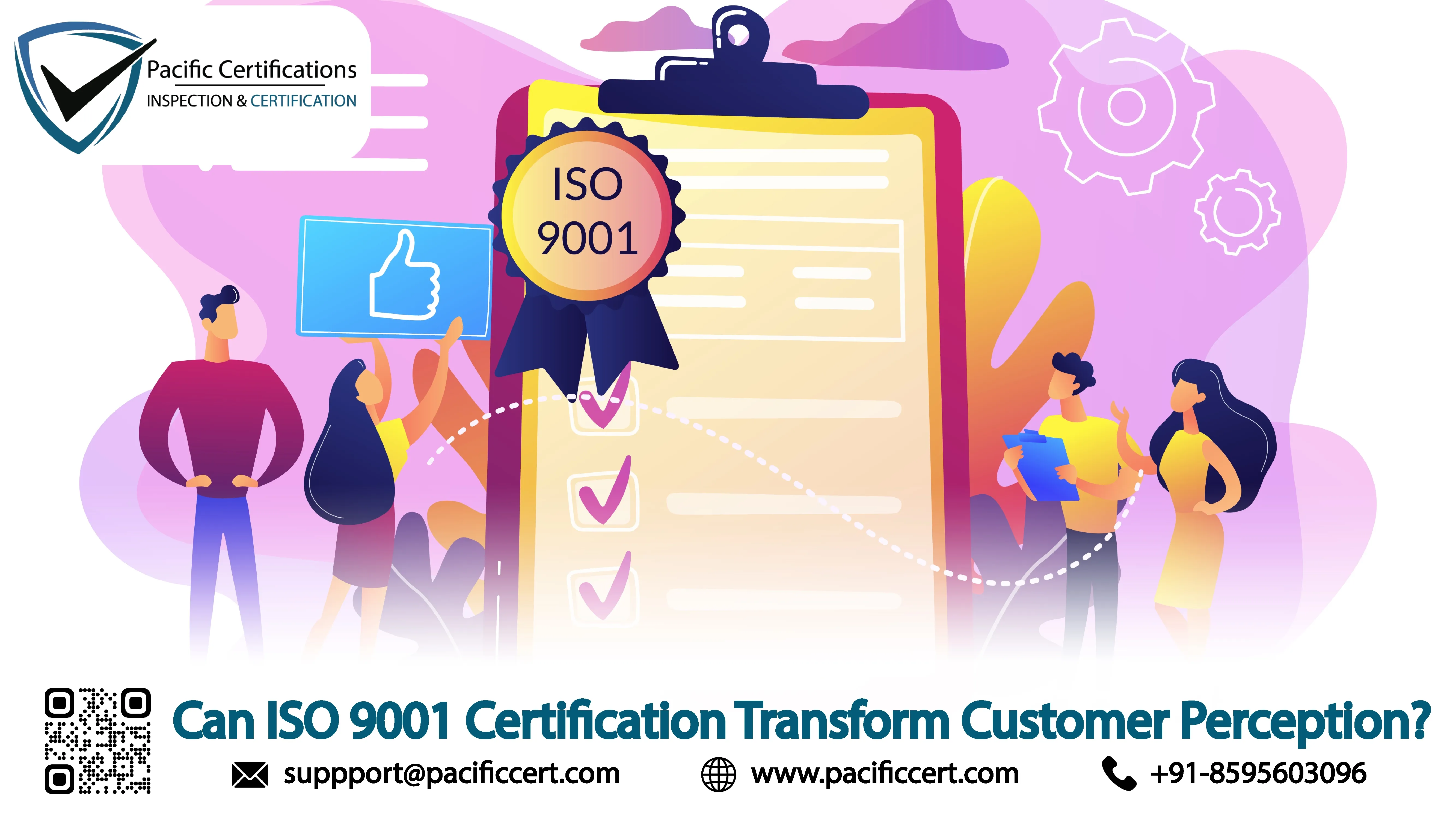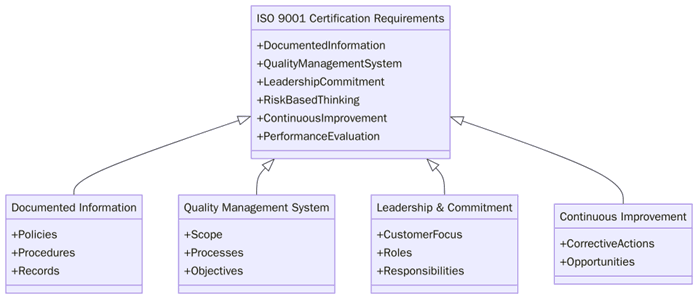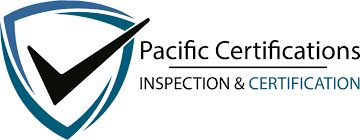Can ISO 9001 Certification Truly Transform Customer Perception Today?

Introduction
In today’s competitive markets, customers demand more than just products and services, they want assurance of quality, reliability and accountability. Businesses across industries are increasingly turning to ISO 9001 certification as a way to provide that assurance. ISO 9001, the globally recognized standard for quality management systems (QMS), not only improves internal processes but also transforms how customers perceive a brand. Certification signals that an organization consistently delivers on its promises, values transparency and is committed to continual improvement.
Start your ISO 9001 certification journey with Pacific Certifications and strengthen customer confidence in your organization.
Quick summary
"ISO 9001 certification enhances customer perception by providing evidence that an organization operates under structured quality management principles. It builds trust, reduces complaints and increases satisfaction by ensuring processes are consistent and outcomes are reliable. For buyers, clients and consumers, ISO 9001 certification acts as a global symbol of credibility and dependability."
Why ISO 9001 certification matters for customer perception?
Customer trust is often influenced by visible proof of quality and accountability. In industries like healthcare, manufacturing and IT services, clients look for certified suppliers because it reduces their risk. According to a 2024 survey by the International Organization for Standardization, over 70% of customers said they were more likely to purchase from ISO 9001-certified businesses, while certified companies reported 30–40% higher customer retention rates. Certification demonstrates to customers that the organization is not just meeting but continuously monitoring and improving its performance.
In today’s competitive markets, customers expect not only reliable products and services but also visible proof of quality. ISO 9001 certification, the world’s most recognized Quality Management System (QMS) standard, helps businesses demonstrate consistency and a commitment to continual improvement.
Relevant aspects of ISO 9001 for customer trust
Aspect | Customer impact | Example evidence | Useful KPIs / SLAs |
Quality policy & objectives | Provides assurance of organizational commitment to quality | Published policies, management review minutes | Customer satisfaction rate, complaint closure time |
Process consistency | Reduces errors and ensures predictable outcomes | SOPs, process maps | Defect rate, right-first-time percentage |
Risk-based thinking | Protects customers from supply or product failures | Risk assessments, mitigation plans | On-time delivery SLA, incident resolution time |
Continuous improvement | Builds confidence that services will evolve with needs | Corrective action logs, performance dashboards | CAPA closure time, audit closure rate |
Customer focus | Aligns operations with customer requirements and feedback | Customer surveys, complaint logs | Net Promoter Score (NPS), repeat purchase rate |
What are the requirements for ISO 9001 certification?
To achieve ISO certification, organizations must go beyond policies on paper and show that their management systems are actively implemented, documented and measurable. In renewable energy projects, for example, requirements ensure that every stage of development, from design and construction to operation and monitoring, is aligned with international benchmarks. Below are some of the key requirements:

- Define scope and boundaries of the quality management system.
- Publish a quality policy and measurable objectives.
- Conduct risk assessments to address customer-related risks and failures.
- Document processes for production, service delivery and customer engagement.
- Train staff on responsibilities and customer interaction standards.
- Monitor customer feedback and maintain records of complaints and resolutions.
- Carry out internal audits and corrective actions to close performance gaps.
- Review performance through management oversight and KPIs.
- Provide evidence of continual improvement in customer outcomes.
Tip: Organizations should treat the requirements not as a one-time checklist, but as a living framework. Embedding them into everyday operations ensures the QMS adds real value and continuously improves customer perception.
How to prepare for ISO 9001 certification?
Preparation requires aligning customer-facing processes with ISO requirements and ensuring systems are evidence-driven.
- Conduct a gap analysis to compare current practices with ISO 9001 requirements.
- Develop or update quality policies and objectives.
- Train employees on quality standards and customer service obligations.
- Document processes for handling complaints, feedback and returns.
- Collect evidence such as customer satisfaction surveys and quality audit reports.
- Pilot internal audits to test readiness.
- Track KPIs like complaint response time, customer retention and defect rates.
Certification audit
The certification audit for ISO 9001 validates whether the organization’s QMS meets global quality requirements.
Stage 1 audit: Reviews policies, scope and documented procedures.
Stage 2 audit: Evaluates implementation across customer-related processes and operations.
Nonconformities: Must be corrected with documented proof before certification.
Management review: Confirms leadership oversight and customer focus.
Final certification: Granted once all requirements are satisfied.
Surveillance audits: Conducted annually to ensure customer-related KPIs remain on track.
Recertification audits: Occur every three years to maintain certification.
What are the benefits of ISO 9001 certification for customer perception?
The benefits of ISO certification extend far beyond meeting compliance obligations. For industries like healthcare, textiles, or blockchain, certification directly influences customer perception, investor trust and operational resilience. When an institution achieves certification, it signals that governance systems are in place, risks are managed and improvements are ongoing. Below are some of the key benefits:

- Improved customer satisfaction through consistent quality and reduced errors.
- Stronger reputation as a globally certified, credible organization.
- Increased customer retention rates and repeat business.
- Easier access to global markets where certification is a prerequisite.
- Better stakeholder relationships due to transparent processes and KPIs.
In recent years, ISO 9001 certification is increasingly viewed as a customer-facing asset rather than just an internal compliance tool. Companies are integrating digital dashboards that display live KPIs such as complaint resolution times and product defect rates, making quality visible to customers. AI-driven analytics are being used to align customer feedback with ISO audit cycles, while global buyers in sectors like automotive and healthcare are making ISO 9001 certification a mandatory supplier requirement. This shows that certification is evolving into both a trust mechanism and a competitive advantage in global supply chains.
This year, over 1.2 million organizations worldwide hold ISO 9001 certification (ISO Survey ). Demand is especially high in healthcare, IT services, and manufacturing, where global buyers increasingly require ISO 9001 compliance as a supplier prerequisite. With ESG and customer experience driving market competition, ISO 9001 has become a trust marker that influences both B2B and B2C decision-making.
How Pacific Certifications can help?
Pacific Certifications provides accredited ISO 9001 certification services across industries. Our independent audits help organizations prove their commitment to quality, strengthen customer trust and achieve global recognition.
Request your ISO audit plan and fee estimate, we will help you map Stage 1 and Stage 2 timelines and evidence requirements for your organization. Contact us at [email protected] or visit www.pacificcert.com.
Ready to get ISO certified?
Contact Pacific Certifications to begin your certification journey today!
Suggested Certifications –
Read more: Pacific Blogs

Author: Alina Ansari